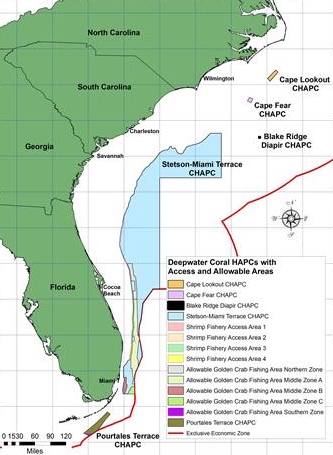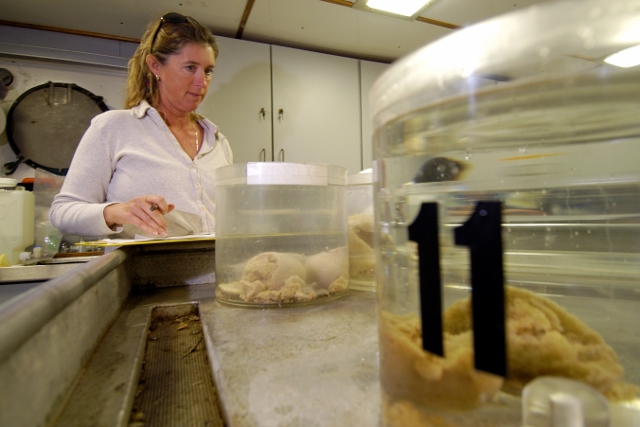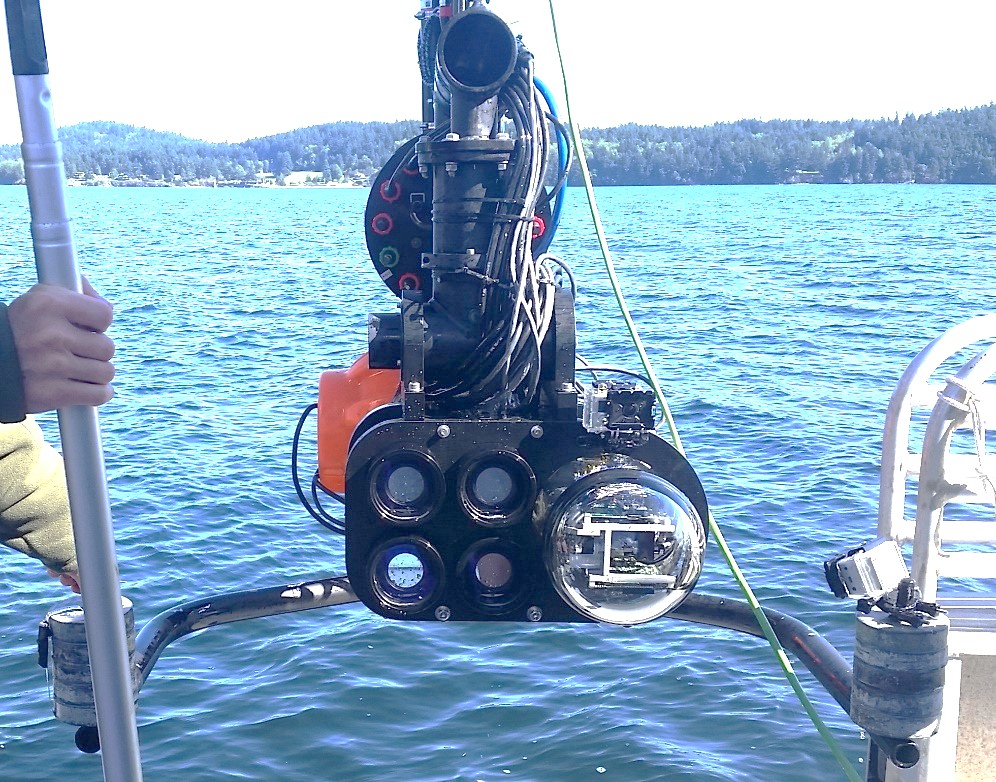Ocean Exploration

The drive to discover fueled the founding and development of Harbor Branch, and the engineers and scientists who built and used the Johnson-Sea-Link submersibles made the institution world-renowned for ocean exploration. Their pioneering work established a culture of scientific inquiry that includes:
Coral reef discovery, characterization, and conservation 
Discovery of Oculina coral reefs off Florida’s east coast by our researchers in 1975 led to the world’s first Marine Protected Area for deepwater coral. More recent study of Lophelia reefs as fragile, essential fish habitat was instrumental in NOAA’s designation of more than 23,000 square miles of Deepwater Coral Habitat Area of Particular Concern (right). Research in these and other coral reef habitats continues through the Robertson Coral Reef Research & Conservation Program and the NOAA Cooperative Institute for Ocean Exploration, Research & Technology (CIOERT).
Marine biomedical and biotechnology research
 Because many medications have natural origins, we have been collecting sponges and other organisms during ocean expeditions for decades. Our
Specimen Collection
, which includes an extensive array of frozen invertebrates from various depths and more than 19,000 different marine microbes, is at the heart of efforts by the
Marine Biomedical & Biotechnology Research Program
to discover marine natural products with utility as medicines or as tools to probe the molecular basis of disease.
Because many medications have natural origins, we have been collecting sponges and other organisms during ocean expeditions for decades. Our
Specimen Collection
, which includes an extensive array of frozen invertebrates from various depths and more than 19,000 different marine microbes, is at the heart of efforts by the
Marine Biomedical & Biotechnology Research Program
to discover marine natural products with utility as medicines or as tools to probe the molecular basis of disease.
Exploration technology innovation 
Our Ocean Engineering & Technology and CIOERT research helps drive the expansion of exploration technologies, especially through the development of optic sensor systems, innovative image processing, and networks of sensors and robotic platforms. FAU Harbor Branch also is home to one of 10 Exploration Command Centers established by NOAA and its partners worldwide that enable remote participation in research cruises involving the NOAA Ship Okeanos Explorer and its deep-diving remotely operated vehicle.
